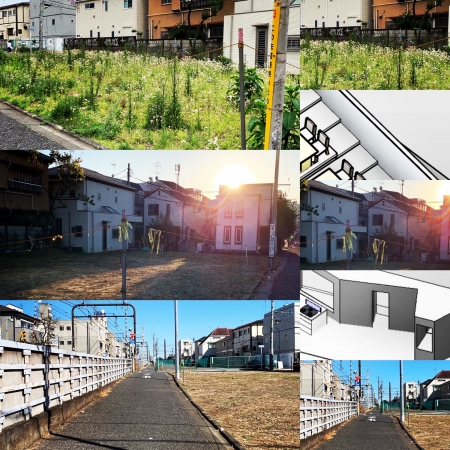曖昧な境界線が生む
これから整備される土地に、整備される前に建築が出現し、その後に道路ができる。本来ならば道路が先で順序が逆になる。建築は道路との関係性で成り立つので、道路は設計する上での大きな手掛かりである。もちろん道路境界ははっきりとしているのだが、実際には道路は存在せず、ただの草が生えた土地があるだけである。
序列が逆転する。好きな所に建築を建てて、それに合わせて道路ができるように、道路の位置など関係無しに建築を考えたらどうなるだろかと考えてみた。
今のところ、目には見えない境界線よりは目に見える草の生えた土地の方がリアリティがある。絶対的な境界線だが目に見えないだけで曖昧になる。境界線が曖昧になるだけで別の視点が生まれる。
"Ambiguous boundaries are created"
Buildings will appear on the land to be constructed before they are constructed, and then roads will be created. Normally, the road comes first and the order is reversed. Roads are a great clue in designing, as architecture is built on relationships with roads. Of course, the road boundaries are clear, but in reality there are no roads, just grassy lands.
The order is reversed. I wondered what would happen if I built an architecture wherever I wanted and thought about the architecture regardless of the position of the road so that the road could be created accordingly.
For now, visible grassy lands are more realistic than invisible boundaries. It's an absolute border, but it's just invisible and ambiguous. Just blurring the boundaries creates another perspective.


